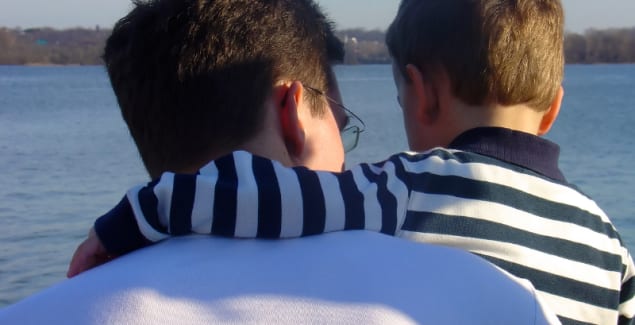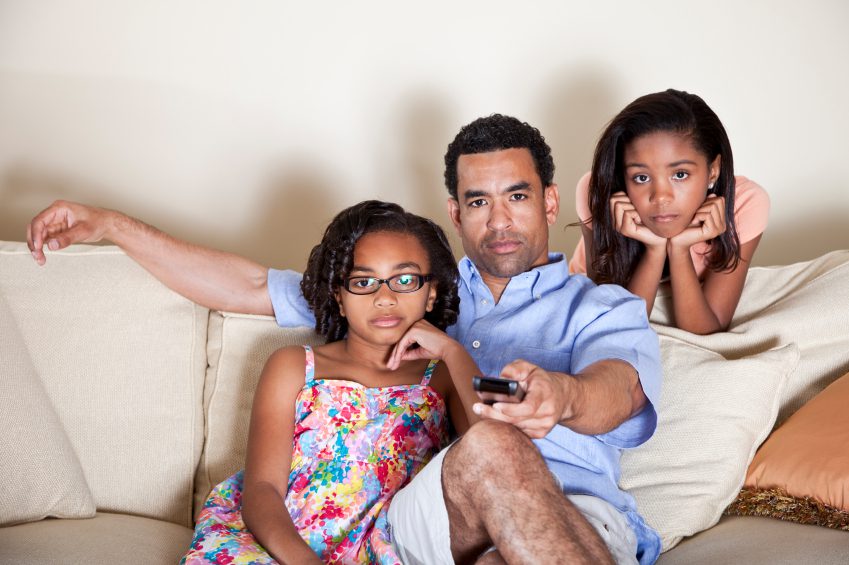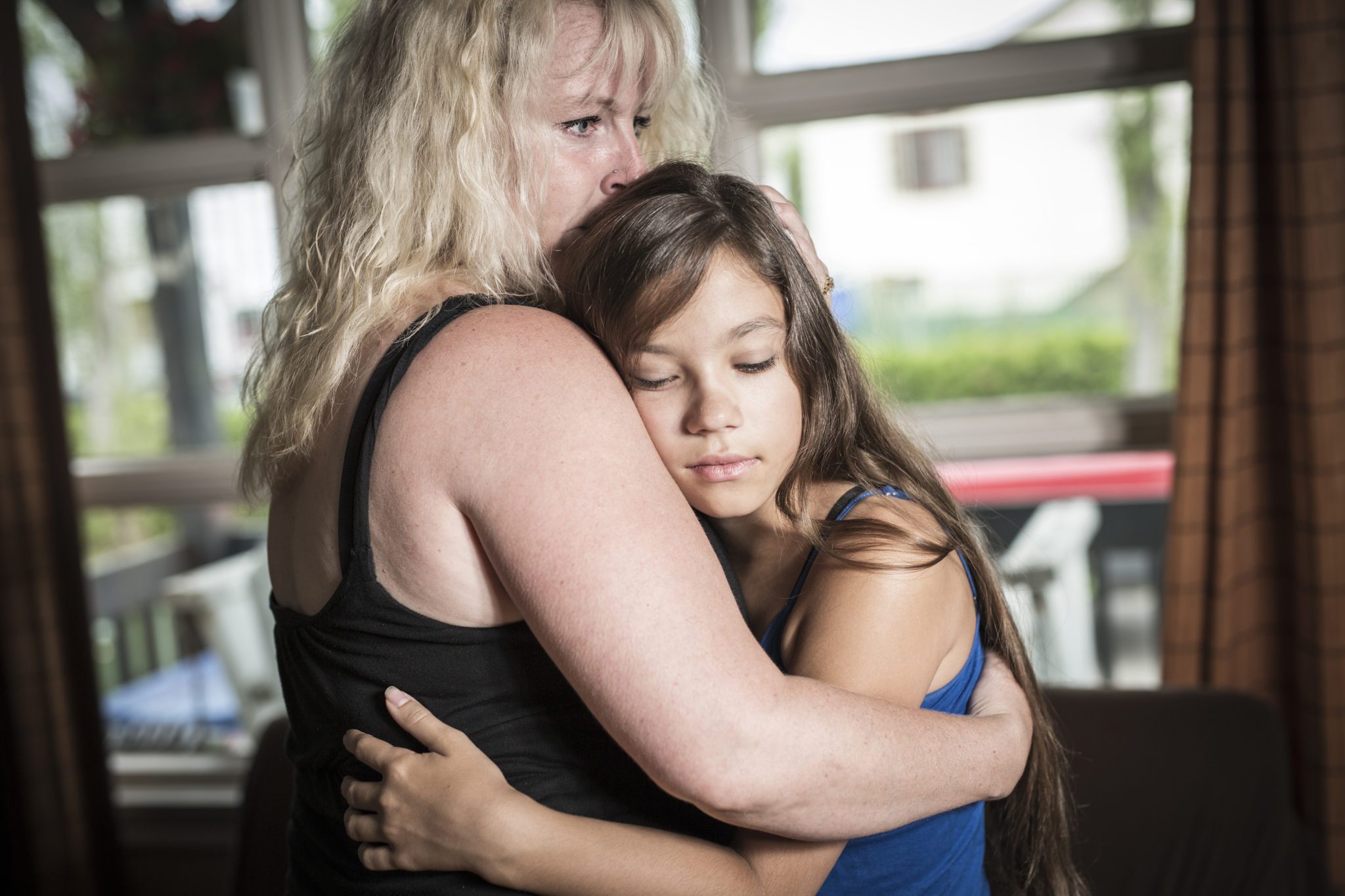How to Talk With Your Kids About the Ferguson Unrest

Posted in: Grade School, Hot Topics, Teenagers
Topics: Hot Topics
On August 9, 2014, Michael Brown, an 18-year-old African-American man, was shot to death by on-duty police officer Darren Wilson in Ferguson, Missouri. The case immediately drew national and even international attention.
Just after the shooting, many commentators sought to view the tragedy as part of a larger narrative. The U.K.’s The Guardian ran a story on August 23, 2014 in which the events in Ferguson were described as part of “a story going back decades.” In that sense, the shooting recalled for many a lengthy struggle of perceived undue force directed specifically at minorities by American police.
As both peaceful protests and violent riots erupted in Missouri and throughout the United States, Americans were once again left to untangle the complicated history of race, social class, the need for police protection and the question of unfair treatment within our society. Because our justice system also depends on the assumption that people are innocent until proven guilty, the nation waited for nearly five months as a grand jury was convened to determine whether criminal charges against the police office were warranted. On Tuesday, November 25th, that grand jury decided not to indict; Officer Wilson would not be charged with a criminal act.
Almost immediately following this decision, both peaceful and violent protests erupted once again. Throughout the United States, many felt that Officer Wilson was the recipient of preferential treatment. Others felt that he acted solidly in self-defense. Regardless of one’s political or social views, and the many peaceful protests, no one was happy about the ensuing destruction that accompanied the most violent demonstrations.
Ferguson itself looked like a war zone the day after the grand jury’s decision. There were scorched cars, burnt down buildings, looted shops and the lingering smell of tear gas in the air. It was scary for everyone. I (Steve) saw children in my town center of Belmont, Massachusetts wondering if the images on the TV in the local deli were from Iraq or Afghanistan. A parent tried to clarify, stating that the images were from the United States; the children became confused—was there another war going on? They had been told that the battles were all overseas.
This, of course, led to more questions from the children. If this wasn’t a war, why were people running from “soldiers?” Why were crowds gathering in protest? What were they so upset about? Why was the commentator on the news talking so much about skin color? How close is Ferguson? Will there be soldiers here in Boston, too? As you can imagine, the parent was understandably a bit flummoxed.
In this piece, we’re to going to try to help parents discuss these issues with children.
Remember that the events in Ferguson are complicated and disturbing. There are allegations of racism, of unfair treatment, of undo privilege, and of unlawful, violent rioting. The near constant media coverage also accentuates and adds fire to these already powerful reactions. If you just catch a snippet of the news, you might be tempted at any age to believe that we are a woefully racist nation, or that riots are somehow justified. You’ll see imagery that confuses the power of peaceful protests with the destruction of violent demonstrations. You’ll hear compelling cases that Officer Wilson acted completely appropriately or utterly barbarically. And, if you’re a child, you likely won’t know what to believe. You’ll just be bothered.
We’d like to argue that being bothered in this particular set of circumstances makes perfect sense.
Children especially will be troubled by the intensity of emotions and the subsequent violence that, at least on television, seems to be related. We hope to offer some advice on how you might discuss with your children the ways that biases can leak into news broadcasts and affect public opinion. This is, of course, not an easy message, but now more than ever we find that media literacy is absolutely essential for our children.
Don’t shy away from the conversation.
Make sure that your children feel safe, and then talk with them frankly about recent events, and the multiple ways that the images they see can perhaps be improperly interpreted.
Start simple:
No, we’re not at war.
Yes, those burning buildings are in the United States.
No, I don’t know exactly what happened in the case that triggered the demonstrations, but under no circumstances are violent actions OK in a civilized society. Violence does not help to resolve conflict.
At the same time, help your child to understand that the vast majority of protests were peaceful and controlled. However, the media won’t cover these incidents with the same level of enthusiasm, as they generally opt for the most shocking images. That message alone is an important one for kids to learn early and often.
As a general rule, think developmentally. We say that a lot at The Clay Center, and this guiding principle is especially important for this discussion. A third grader won’t be able to argue the nuances of these events, but a high school student will relish the opportunity. If you use a one-size-fits-all approach to the discussion, you’ll fall prey to the same tactics that many of the media outlets employ—oversimplifying your message when the message itself is immensely complex.
What follows is a developmental primer for how best to discuss these vexing issues.
For all kids, it’s important to start the conversation with open-ended questions before moving to more specific inquires about a particular incident:
- What do you know about the situation in Ferguson? What happened?
- What are you seeing on TV or on your smartphone or tablet?
- How do you understand the demonstrations? Why are so many people gathering in public? What are their concerns?
These questions help to set the stage. We can’t possibly predict what our kids have seen, nor can we make assumptions about how they’ll interpret what they’ve seen. In order to answer your child’s questions, you first need to know what those questions are, and how they may have been modified by media exposure.
After you’ve established what your child knows and understands, it’s a good idea to start with some universal reminders. Much more has come into public awareness about police brutality toward people of color, in recent years. While kids should know that while most police and folks in uniform are good people, they should be viewed with more wariness, as profiling and discrimination against people of color is a reality we must all come to terms with.
Kids of all ages need to know a few basic principles about their police officers. This is particularly true for younger, school-aged kids. Here are the basics:
- Most police officers are working on behalf of all of us to keep the peace.
- Their job as law enforcement officials is to prevent violence and uphold the law.
- Their job is to do their best to accomplish these difficult tasks in all sorts of situations.
- If you are in danger or need help, you should always go to someone you trust—this could be a parent, a relative, a teacher, a church leader, or a police officer—you must decide you who you trust.
In other words, and again this is especially important for younger children, a child should feel generally comfortable trusting the police. No good can come in making a small child frightened of police officers.
That said, if you have reason to believe that the police in your town are not safe, convey that message, but carefully. Tell them if they feel danger or anger directed at them or someone else in the presence of person in uniform, a white collar, a coach in your school – they need to rely on their feelings and stay safe. They need to let someone they trust know about it.
- Ask your kids what they would do in situations of perceived danger.
- Ask how they would respond and cope when they see others experience abuses, or hear about it happening.
Teenagers and young adults, will demand a more complex discourse. They’re bound to ask difficult and extremely important questions:
Are the police biased?
What role could bias have played in the events in Ferguson, and in the subsequent media coverage?
These are fair questions, and if parents don’t take the time to consider them, teens will likely make assumptions in the absence of you talking about it with them. With older kids:
- Start, as we said, with open-ended inquiries, and then try to understand the reasoning behind the answers you receive.
- Don’t try to act as if bias does not exist. We all have our biases, and they’re bound to express themselves in both the news and in public opinion. Ask your teen what role bias may have played in the events in Ferguson, and in the demonstrations that followed.
- Complicate your teen’s thinking. Ask him or her to consider the difficulty of making split-second decisions in situations that are highly stressful. You might even put your teen in the shoes of the various players in the story. How would he or she react if he or she felt threatened by the police? If he or she were a police officer?
The discussion that these questions will generate might be uncomfortable, but they can also be highly rewarding. Teens are itching for this sort of back-and-forth.
In conclusion, there are a number of take-home messages for parents in the wake of the tragedy in Ferguson:
- You know your child best, but you don’t necessarily know what he or she is viewing in the media. Any discussion about the events requires you to know what your child is seeing, and how he or she is responding.
- We need to help our kids feel safe in a world they often see through the eyes of the media.
- For younger children, it’s probably best to turn off the TV, take away the smartphone, and make more stringent efforts to control their digital media input.
- For older kids and young adults, it’s important to watch the news together so a conversation can be held in real time.
- For all kids, it’s important for them to know what to do in an emergency, who they can trust and whom they can turn to if they’re worried or need to ask tough questions.
At the end of the day, there are, of course, multiple forces influencing our kids’ reactions to personal and global events. As parents, teachers, therapists and coaches, we have an important responsibility to help our children respond in reasonable, empathic and objective ways. In a complicated world, the events in Ferguson will be just one of many that need this kind of careful consideration.

 Share
Share Tweet
Tweet






